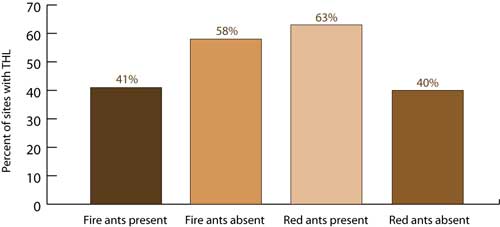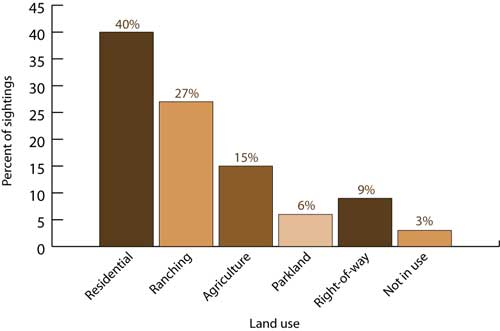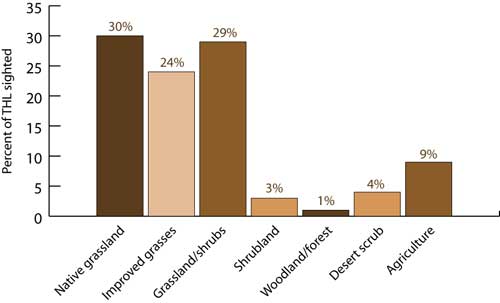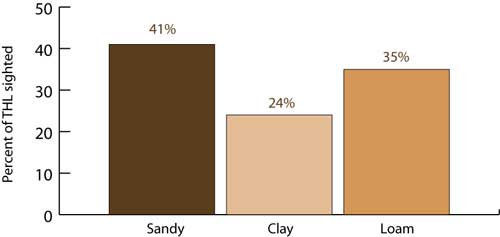Texas Horned Lizard Watch 10-Year Summary Report
Results – Habitat Characteristics
Some volunteer data indicate a relationship between the presence of THL and ant species (fig. 5). Presence/absence data show an apparent positive relationship between the presence of Texas Horned Lizards and the presence of harvester ants (Pogonomyrmex sp.), their preferred food source (Fisher's exact test, two-tailed, p=0.0267). Data from counties where red imported fire ants are found also suggest that distributions of Texas Horned Lizards and red imported fire ants may not be independent (p=0.0636). The negative relationship is even stronger for the first five years of data (p<=0.0001). In addition, when data from transects was examined using multiple regression, it was found that densities of red imported fire ants and densities of harvester ants were good predictors of the density of horned lizards (R2 = 0.70), with a negative effect from red imported fire ants and a positive effect from harvester ants.

Figure 5. Texas Horned Lizard presence vs. ant species presence, 1997-2006
Volunteers also provided data on land use and habitat. Overall, THL were reported most often from lands that were used for residential areas or for ranching (fig. 6), likely reflecting a tendency of volunteers to monitor these types of habitats. Pooled data collected between 1998 and 2006 do not indicate that THL presence is related to land use; however volunteers did not tend to sample some habitats (such as agriculture and parkland) frequently. During the sampling period, THL were found most often in native grassland, mixed grass and shrub communities, or in improved grasslands (fig. 7); however these habitat differences were not statistically significant. THL were reported from sand, clay and loam soils, with no measurable effect from soil type (fig. 8).

Figure 6. Land use where Texas Horned Lizards were sighted, 1998-2006

Figure 7. Habitat types where Texas Horned Lizards were found, 1998-2006

Figure 8. Soil types where Texas Horned Lizards were recorded, 2000-2006
Top of Page^
 (
(